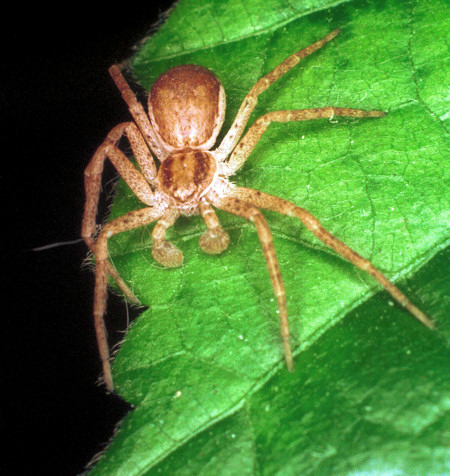
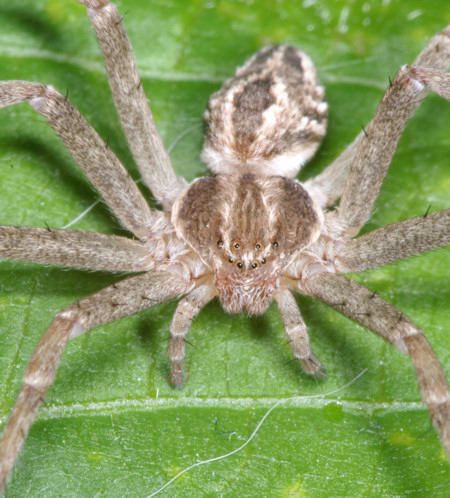
With different approaches per species, the male announces to the female that he is interested in mating. Males of some species offer a present, others tinkle with their feet in the web of the female and some perform a dance.
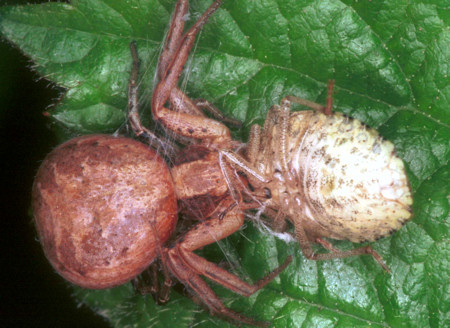

| Sex and reproduction |
|
Sex and reproduction
| Also spider has to reproduce and therefore there are males and female spiders. Males are often smaller and more coloured than the females. Males can be easily recognized by what seems to be the fifth pair of legs. These are the palps with bulbs they use to inject sperm in the genital openings of a female. | |
 |
 |
| Male Philodromus albidus, note the palps with bulbs that is typical for male spiders. | Female Thanatus arenarius; a female palp has no bulbs |
| The reproduction organs of a spider are located in front of
the spinners. When the time comes, the male starts wandering around to look
for a female. This is the time when we may come across our house spider.
Normally the spider does not like to be seen. But now he has to move and run
through our house, searching for a partner and unwittingly panicking the
habitants of the house. When he has located the female, he has to take care
not to be mistaken for a prey by the female. With different approaches per species, the male announces to the female that he is interested in mating. Males of some species offer a present, others tinkle with their feet in the web of the female and some perform a dance. |
|
 |
 |
| The male of Xysticus cristatus offers the female a caught insect. If she accept the offer the male wraps her with a few threads of silk to "tie" her up. This is a ritual act because these threads are to tiny to immobilize her. While the female consumes her present, the male copulates her. | |
If the signals are right and the female is ready for sex the male is allowed to approach. Prior to copulation a male fills its bulbs with sperms by weaving a small web. On the web he drops some droplets of sperm from its genitals and sucks the sperm into the bulbs. |
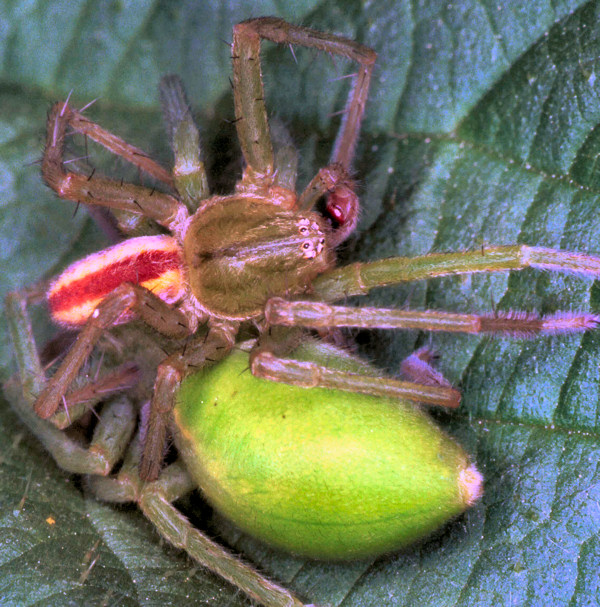 |
| The male is ready to insert his palp in the female genitals. |
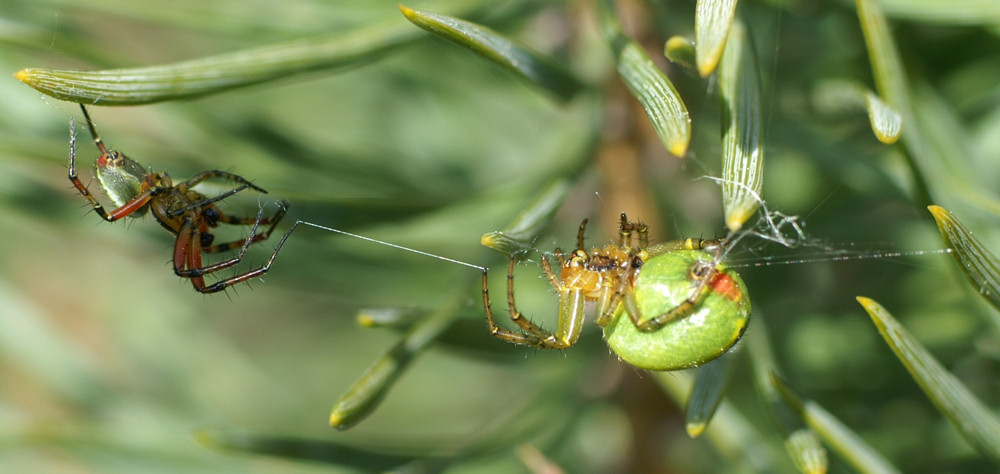
Careful and tender approach
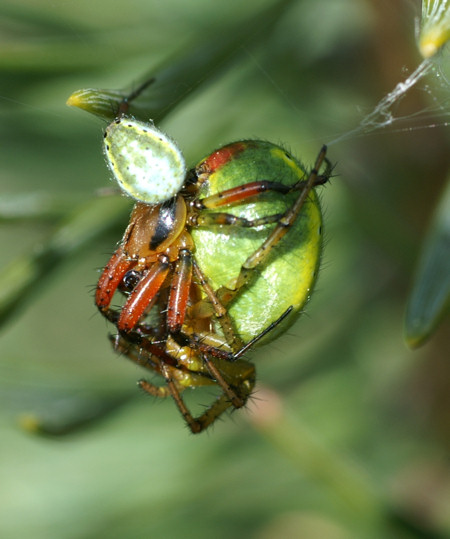 |
|
| Araniella cucurbitina's making love | Pardosa lugubris with youngsters on her back |
After mating, the males of some species must be extremely
careful. Sometimes the female tries to kill the male for an easy meal. Often
the male escapes. The males of some species do not care anymore to live
longer and are eaten without objection. Other species live together happily
for a long time after mating. There is a great diversity in sexual behaviour
among species. |
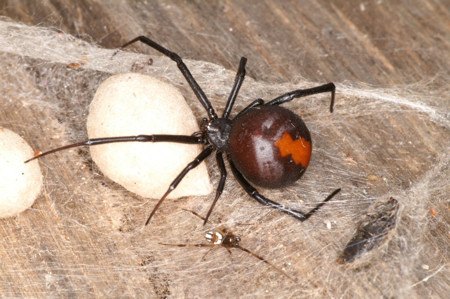 The 'Black widow' spiders (Latrodectus species) gained their name because they eat their males after mating. Here the much smaller male happily wanders around the female that is guarding her egg-sacs. |
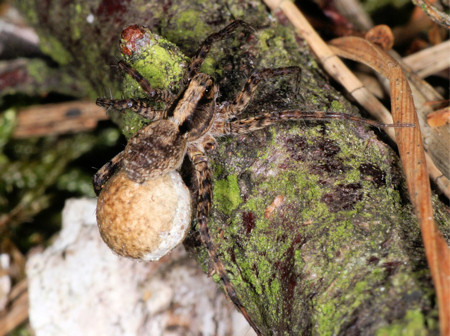 Pardosa lugubris with egg-sac attached to her spinners |
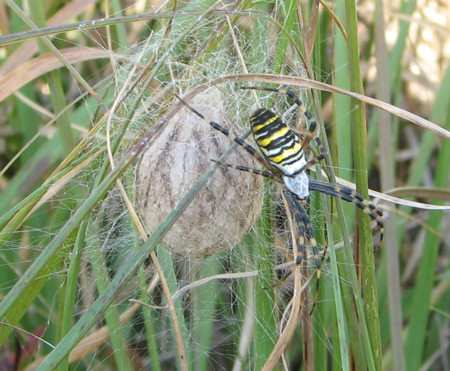 Argiope bruennichi guarding her egg-sac. (picture Iljitsj van Kessel) |
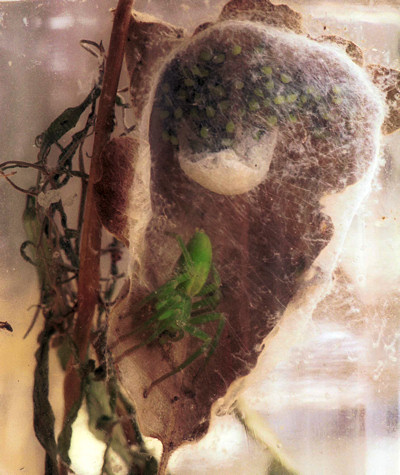 |
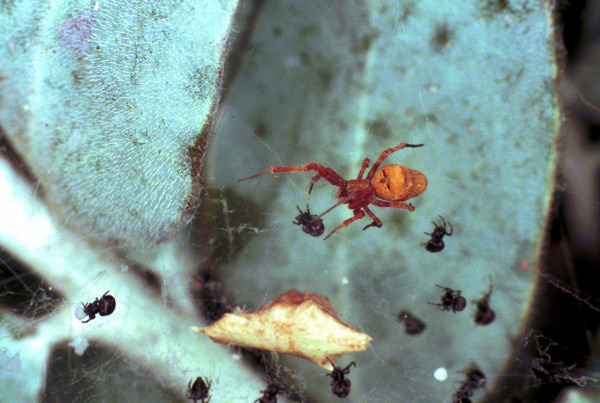 |
| Micrommata virescens guarding her just hatched youngsters | Theriid with youngsters |
 |
 |
| Araneus diadematus youngsters | Youngsters of Argiope trifasciata clustered to a yellow ball |
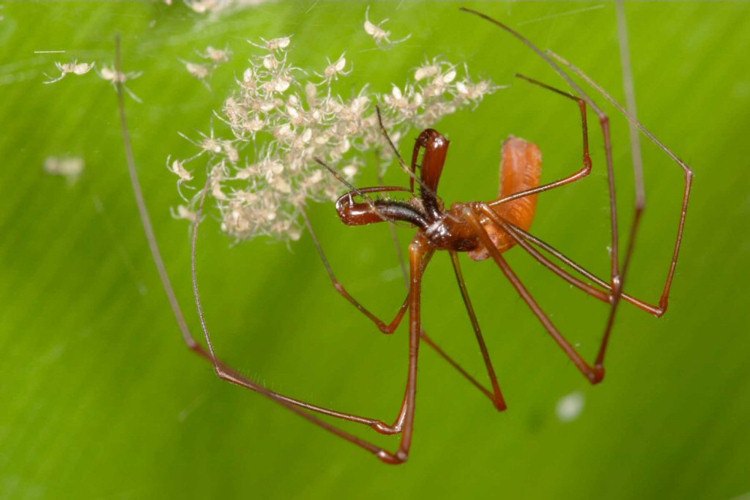
Tetragnatha ZZ282 playing with her children.
Ed Nieuwenhuys, 23 march 2023
December 2011, March 23, 2008, January 2008, January 2006